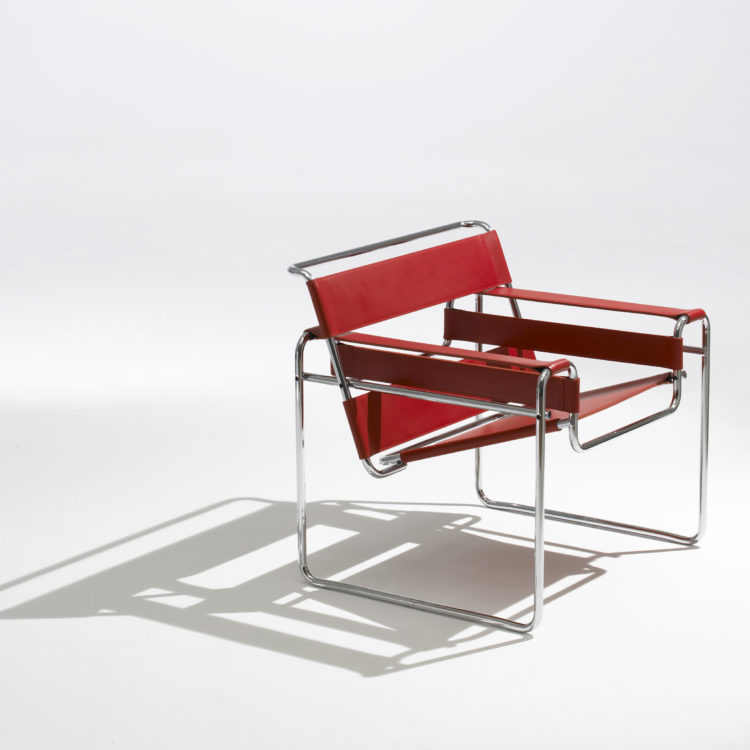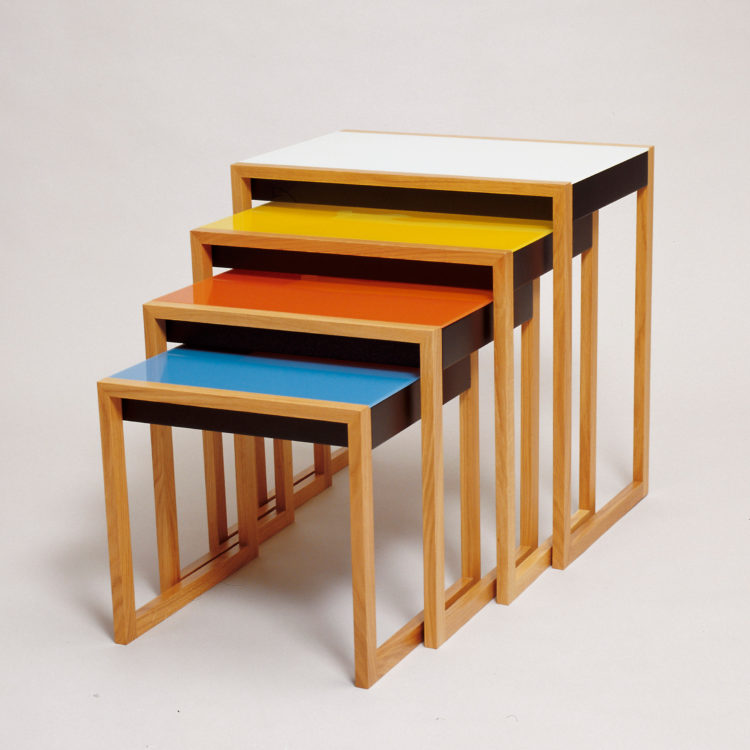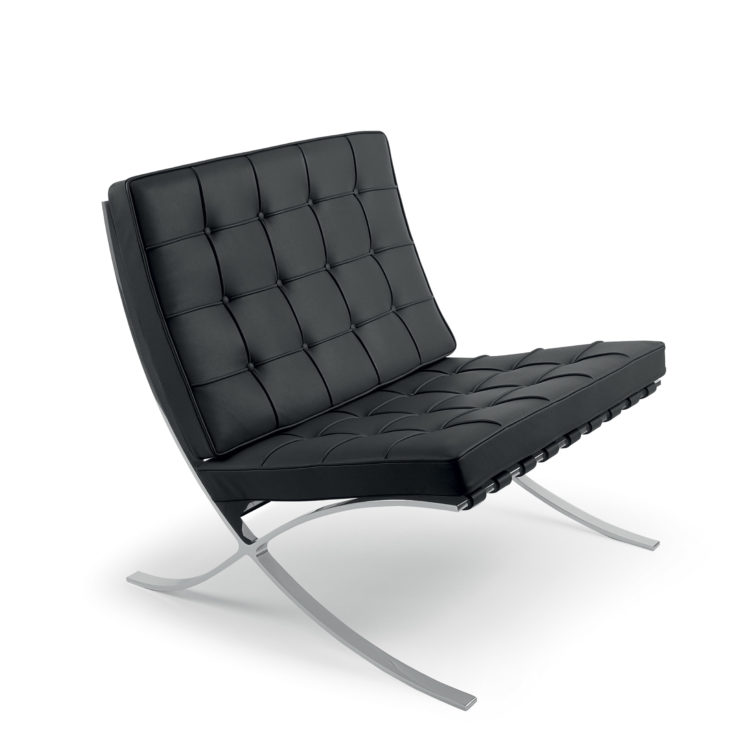100 years of Bauhaus
Posted by Bath Bespoke on 15 March 2019
As this seminal design movement celebrates its centenary we look back at some of the design icons to emerge from the school and consider how the twenty-first century might benefit from its optimism for the future…

“The Bauhaus strives to reunite arts and crafts – sculpture, painting, applied art, and handicrafts – as the permanent elements of a new architecture“
Bauhaus manifesto, Walter Gropius
From the beginning, the Bauhaus – which literally means construction house – sought to unify art and craft, by bringing these disciplines together both physically, under one roof, and as a school of thought, in the nature of the curriculum that was taught. Walter Gropius founded the Bauhaus in 1919 in the town of Weimar, by bringing together existing institutions – the old Academy of Fine Arts and a more recently established School of Applied Arts.
For Gropius, breaking down the old artistic hierarchies was not simply a cultural act, but a social one too – his aim was a fundamental reordering of society ready for the modern age. He believed that all design should be approached through a study of the problems that needed to be addressed. The Bauhaus aimed to reunite fine art and functional design, creating practical objects with the soul of artworks, and it was this which underpinned the Bauhaus’s most original and important achievements.
The school became a place that despite the economic turmoil and cultural conservatism of the world around it, offered a truly radical, international and optimistic vision of the future. This drew luminaries of the time to create what we now appreciate as modernist design icons…
Marcel Breuer

Surrounded by expressionism, Marcel Breuer was an early proponent of the more rational approach that the Bauhaus school would become known for in the mid-1920s.
Breuer is immediately connected to the Model B3, also known as the Wassily Chair. This iconic tubular steel chair was inspired by Breuer’s bicycle and made with the latest in steel-bending technology. He took the traditional form of an overstuffed club chair and stripped it down to its outline.
Breuer’s work was in many ways a perfect demonstration of the Bauhaus ideals of art meeting industry. Early versions of the B3 chair were only made possible due to steel manufacturer Mannesmann developing methods that removed seams from steel tubing, and the fabric straps (later replaced by leather) that constitute the chair’s arms, back and seat were developed by Margaretha Reichardt, a weaving workshop student.
It gained its commercial name after a curious Wassily Kandinsky expressed an interest in an early version of the chair in Breuer’s studio and went on to be one of the first recipients of a post-prototype model for his own office.
Josef Albers

Artistic Director of the furniture workshop at the Bauhaus, Josef Albers conceived this set of four tables for a friend’s Berlin apartment. Crafted from solid oak with lacquered glass tops, they work “independently and interdependently.”
Playing a leading role in bringing the modern design principles of the Bauhaus to the United States, Albers was known for his geometric paintings and his compositions that explored the relationship of colour through simple forms, and he applied his logic and passion for colour to these tables.
A Bauhaus classic, the Nesting Tables epitomise the Bauhaus aesthetic preoccupation with block colours and simple forms, and Albers designed these functional and elegant tables with great craftsmanship and meticulous and rich simplicity in mind.
Ludwig Mies van der Rohe

The modernism pioneer, Ludwig Mies van der Rohe, offered up the ‘less-is-more’ approach to design which would go onto become the gold standard for many generations of modern architecture.
Created in 1929 for the Barcelona International Exposition, the Barcelona Chair was designed by Mies van der Rohe in collaboration with architect Lilly Reich.
One of the most recognised objects of the last century, and an icon of the modern movement, Mies van der Rohe drew his inspiration from an Egyptian folding chair and a Roman folding stool. It was supposed to bring to mind a throne.
Indicative of Bauhaus ideals and the marriage of modern design and exceptional craftsmanship, the highly cantilevered seat of the Barcelona Chair really only became possible in the contemporary period with modern materials, seamlessly blending elegant structural form and function.
“The Bauhaus was one of the birthplaces of the modern world. It provided a utopian vision and a forward-looking worldview.”
Prize-winning architect Norman Foster in The Guardian
Bauhaus came into existence when the world was in a state of flux, re-emerging from the atrocities of the First World War, and a societal surge forward was needed to inspire hope for the future.
The school addressed anxieties about the soullessness of modern manufacturing and fears about art’s loss of social relevance. Its approach to teaching, and to the relationship between art, society, and technology, had a major impact both in Europe and in the United States long after its closure under Nazi pressure in 1933.
But the Bauhaus impact extended far beyond design education – it was a place conceived to grapple with a fast-changing world, and to find a cultural response that would not just mitigate its transformations, but mould them for the benefit of society at large. A timeless endeavour, this preparation for the modern age still bears relevance today as the forces that led to its closure continue to make their presence felt one hundred years on. A forward-looking worldview is needed once again. A movement willing to tackle, and not shy away from, a changing world. A collective that embraces and inspires a fundamental optimism for the future, a century down the line, and urges future generations to do the same.